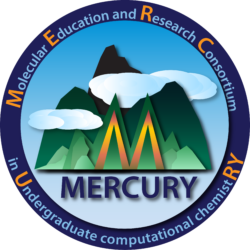KEYNOTE SPEAKERS

Anne Chaka, Computation of
Chemical and Physical Properties, National Institutes of Standards and Technology, Computational
Chemistry Group.
Ken Jordan, Molecular &
Materials Simulations, University of Pittsburgh, Department of Chemistry
Kennie Merz, Applying Quantum
Mechanics to Biological Systems & Quantum Bioinformatics, Pennsylvania State University,
Department of Chemistry.
Jane Murray, Molecular Surface Electrostatic Potentials and Condensed Phase Properties, University of New Orleans, Department of Chemistry.
Nita Sahai, Aqueous and Surface Geochemistry, University of Wisconsin, Madison, Department
of Geology & Geophysics.
Carlos Simmerling,
Computational Structural Biology, State University of New York at Stony Brook, Department of
Chemistry.
Darrin York, Biomolecules in
Solution, University of Minnesota, Department of Chemistry.
KEN JORDAN
“Molecular and Materials Simulations”
ABSTRACT:
Molecular clusters tend to have very complex potential energy surfaces, making it difficult to
locate the global minima and also to converge finite temperature simulations. Extensions of the
Monte Carlo procedure to deal with these problems will be discussed. Results will be presented for
small water clusters as well as for conformationally flexible biomolecules. A novel procedure for
carrying out Monte Carlo simulations using ab initio energies will also be considered.
SUGGESTED READING:
(1) L.J. Munro, A. Tharrington,
and K.D. Jordan, “Global Optimizations and Finite Temperature Simulations of Atomic and Molecular
Clusters”, Computer Phys. Comm., 145, 1-23 (2002)
(2) R. A. Christie and K. D. Jordan, “Finite Temperature Behavior of
H+(H2O)6 and H+(H2O)8“, J. Phys.
Chem., 106, 8376-8381 (2002)
(3) J.M. Pedulla, K. Kim and K.D. Jordan, “Theoretical Study of the n-Body Interaction
Energies of the Ring, Cage and Prism Forms of (H2O)6“, Chem. Phys. Lett.,
291, 78-84 (1998)
(4) J.M. Pedulla and K.D. Jordan, “Melting Behavior of the (H2O)6
and (H2O)8 Clusters”, Chem. Phys., 239, 593-601
(1998)
(5) C.J. Gruenloh, J.R. Carney, C.A. Arrington, T.S. Zwier, S.Y. Fredericks, and K.D.
Jordan, “Infrared Spectrum of a Molecular Ice Cube: The S4 and D2d Water
Octamers in Benzene-(Water)8“, Science 276, 1678-1681
(1997)
(6) C. J. Tsai and K. D. Jordan, “Use of the Histogram and Jump Walking Methods for
Overcoming Slow Barrier Crossing Behavior in Monte Carlo Simulations: Applications to the Phase
Transitions in the (Ar)13 and (H2O)8 Clusters”, J. Chem. Phys.,
99, 6957-6970 (1993)
(7) C. J. Tsai and K. D. Jordan, “Use of an Eigenmode Method to Locate the Stationary
Points on the Potential Energy Surfaces of Selected Argon and Water Clusters”, J. Phys. Chem.,
97, 11227-11237 (1993)
KENNIE MERZ
“Towards All-Electron Modeling of Biomolecular Systems: Applications to Drug Discovery”
ABSTRACT:
With the
explosion in the availability of high-resolution X-ray structures of biomolecules there is an ever
increasing need to annotate this structural data in order to extract, for example, information
regarding the folding of these molecules as well as their interactions with small-molecule
therapeutics and their environment(s). In this presentation, we will argue that quantum mechanics is
now able to annotate available biomolecular structures in unique ways. In order to support this
notion we will describe our recent efforts at applying semiempirical linear-scaling methodologies to
biological systems. First, we will briefly discuss the divide and conquer approach (D&C) as
applied to semiempirical theory at the NDDO level (i.e., MNDO, AM1 and PM3).[1,2] We will also
demonstrate the performance of the method and discuss its range of applicability to solve
biologically and pharmaceutically relevant problems.[3] In order to begin to widely apply
semiempirical linear-scaling methodologies to biological systems solvent must be included in the
calculations. Thus, we will describe the implementation and application of Poisson-Boltzmann (PB)
methodologies that use charge distributions determined using these quantum mechanical
methodologies.[4] Next, we will describe the development of quantum mechanics based protein/small
molecule scoring functions that can be used to supplement standard docking protocols and classical
scoring procedures.[4] The final topic will cover the development of a Quantum Bioinformatics
Database (QBD) that is capable of storing and retrieving quantum mechanically derived information
(e.g., charge distributions, MOs, total energies, etc.) regarding biomacromolecules and biologically
relevant small molecules and then analyzing the resulting data in meaningful ways.
SUGGESTED READING:
(1) Dixon, S.L. and K.M. Merz, Jr., Semiempirical Molecular Orbital Calculations with Linear System
Size Scaling. J. Chem. Phys., 1996. 104: p. 6643-6649.
(2) Dixon, S.L. and K.M. Merz, Jr., Fast, Accurate Semiempirical Molecular Orbital Calculations for
Macromolecules. J. Chem. Phys., 1997. 107(3): p. 879-893.
(3) van der Vaart, A.; Suarez, D. and K. M. Merz, Jr. Critical Assessment of the Performance of the
Semiempirical Divide and Conquer Method for Single Point Calculations and Geometry Optimizations of
Large Chemical Systems J. Chem. Phys. 2000, 113(23): p. 10512-10523.
(4) Gogonea, V. and K.M. Merz Jr., Fully Quantum Mechanical Description of Proteins in Solution.
Combining Linear Scaling Quantum Mechanical Methodologies with the Poisson-Boltzman Equation. J.
Phys. Chem. A, 1999. 103(26): p. 5171-5188.
JANE MURRAY
“An Adventure into the World of Chemistry: Molecular Electrostatic Potentials and Molecular
Properties”
ABSTRACT:
Any distribution of charge creates an electrical potential in the surrounding space, as dictated by
Coulomb’s law. When this distribution of charge is the nuclei and electrons of an atom or molecule
“frozen in space,” the resulting electrical potential is called the “electrostatic” potential. The
electrostatic potential is a fundamental determinant of intrinsic atomic and molecular properties
(e.g. energies, chemical potentials, covalent radii) as well as a well-established guide to chemical
reactive behavior, especially in noncovalent interactions. In my talk, I will focus upon the use of
the molecular electrostatic potential as a tool in the elucidation of molecular interactions, both
in qualitative and quantitative applications. My intention is to introduce a realistic way of
looking at molecules which transcends atomic and bond symbols and which provides a window into their
world.
SUGGESTED READING:
(1) T. Brinck, J. S. Murray and P. Politzer, Mol Phys, 76, 609 (1992).
(2) J. S. Murray, T. Brinck, P. Lane, K. Paulsen and P. Politzer, J Mol Struct (Theochem),
307, 55 (1994).
(3) H. Hagelin, T. Brinck, M. Berthelot, J. S. Murray and P. Politzer, Can J Chem,
73, 483 (1995).
(4) J. S. Murray and P. Politzer, J Mol Struct (Theochem), 425, 107 (1998).
(5) P. Politzer, J. S. Murray and Z. Peralta-Inga, Int J Quantum Chem, 85, 676
(2001).
NITA SAHAI
“Using Computational Chemistry to Study Biomineralization”
ABSTRACT:
Biominerals are composite materials produced by organisms via the interaction of organic
compounds with dissolved inorganic species. The composite nature renders unique materials properties
such as high fracture toughness and mesoporosity, inspiring scientists to attempt biomimetic
materials synthesis. Controlled design and production of biomaterials requires an understanding of
the reaction pathways that lead to the nucleation of the earliest crystals. The angstrom to
nanometer size range of the earliest solid phases formed makes their identification and
characterization by traditional methods a difficult task. We have, therefore, developed a novel
approach combining quantum chemical computational method with vibrational and NMR spectroscopy to
identify the species involved in the reaction pathways for biogenic silica (amorphous
SiO2) precipitation by eukaryotic microorganisms such as diatoms and sponges and, for
hydroxyapatite (Ca5(PO4)3(OH)) precipitation on the surfaces of
orthopedic bioceramic implants in vertebrates.
Specifically, we have used Hartree-Fock theory to calculate optimized structures, formation
energies, and 29Si NMR chemical isotropic shifts of organosilicates putatively involved
in diatom metabolism. When compared with experimental spectra, we show that it is energetically
possible to use quadra-coordinated organosilicates for storing silicon intracellularly, thus
increasing silicon solubility until required for silica precipitation. Further, we find that penta-
and hexa-coordinated organosilicates are unlikely to be stable under natural biological conditions.
It is experimentally observed that silica ceramic surfaces promote the growth of calcium
phosphate from aqueous solutions simulating body fluids. We have used Hartree-Fock theory to
identify the active surface site on the bioceramic surfaces and identified the most likely reaction
mechanism by comparing calculated vibrational frequencies to experimental Raman and FTIR spectra,
and calculated 29Si and 31P NMR shifts with experimental spectra.
CARLOS SIMMERLING
“Simulations of Protein Structure and Folding: What Can We Learn?”
ABSTRACT:
One of the most important challenges for computational biophysics is the prediction of accurate
atomic-detail models of protein structure when experimental data is unavailable. This seminar will
present our recent work toward this goal, including the first successful blind prediction of
structure for a mini-protein. However, simulations have the potential to provide much more than
native conformations; it may be possible to determine why that particular structure is preferred,
and what physical interactions stabilize it. We therefore investigated a variety of sequence mutants
of the mini-protein, and simulation results will be compared to experimental data. Finally,
simulations have the potential to provide new insight into the folding process itself. Equilibrium
and non-equilibrium simulations for several model sequences will be compared to determine if a
consistent view of the folding landscape can be obtained from each type of calculation, and to
evaluate the reliability of these methods.
SUGGESTED READING:
All-Atom Structure
Predicition and Folding Simulations of a Stable Protein
DARRIN YORK
“New generation quantum models for biological systems in solution”
ABSTRACT:
Modern
computational chemistry is faced with exciting new challenges in the new millennium. A rapidly
advancing research area is at the interface of traditional disciplines in chemistry and biology, and
involves the integration of experimental and theoretical methods that, together, are able to paint a
detailed picture of processes that span individual molecule, nano-scale and even meso-scale domains.
Consequently, it is a major goal of computational chemistry to develop “multi-scale” quantum models
that are able to simultaneously span a broad range of spatial and temporal domains.
In this talk, several advancements in the development of accurate quantum models for
molecular simulations of biological reactions and the characterization of macromolecular reactivity
are presented. Techniques that will be discussed include: new quantum models for hybrid quantum
mechanical/molecular mechanical activated dynamics simulations, and so-called linear-scaling
electronic structure and solvation methods for macromolecules. Applications will focus on the study
of phosphate hydrolysis reactions in solution and catalyzed by ribozymes, and the determination of
chemical reactivity indices of important drug targets such as the HIV nucleocapsid
protein.


